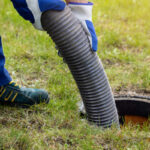Are you tired of waking up to the chirping of birds outside your window? Have you had enough of bird droppings littering your property and damaging your car?
Birds are undoubtedly beautiful creatures, but they can quickly become a nuisance in residential areas. Whether you’re dealing with pigeons, sparrows, or seagulls, their incessant chirping, messy nests, and droppings can drive you crazy.
But not to worry – there are simple and effective ways to get rid of birds in your property area without causing them harm.
In this article, we’ll share 6 proven methods for bird control that work. We’ll also touch on the pros and cons of each method so you can make an informed decision on which approach to take.
Birth Control
If you’re looking for a humane and permanent residential bird control method, birth control might be the best solution for you. This method involves feeding contraceptive-laced bait to control the breeding of pest birds.
One of the advantages of bird birth control is that it doesn’t harm the birds or disrupt their natural behavior. Instead, it prevents them from reproducing, which can help to reduce the population of pest birds over time. This method is also non-invasive and doesn’t require physical barriers or devices, which can be a more aesthetic option for some homeowners.
However, it’s important to note that bird birth control is a long-term solution that requires ongoing maintenance and monitoring. It can take several months or even years to see a significant reduction in the bird population, and it’s important to continue the birth control program to maintain the results.
If you’re interested in trying bird birth control, consult a professional bird control service to ensure that it’s the right method for your situation and receive proper guidance on its application.
Scare Tactics
Scare tactics are a popular and effective method for deterring birds from roosting or nesting in residential areas. This method involves creating visual or auditory stimuli that mimic natural bird predators or danger, causing birds to feel threatened and avoid the area.
One of the advantages of scare tactics is that they can be implemented quickly and easily without requiring special equipment or professional help.
Examples of visual deterrents include fake predators, such as plastic owls or snakes, or reflective surfaces, such as aluminum foil or Mylar tape.
Auditory deterrents can include predator calls that mimic natural bird predators.
However, it’s important to note that scare tactics may only be effective for a limited time. Birds can quickly adapt to their environment and become accustomed to the scare stimuli.
They may also not work for all bird species or situations, especially for birds that are already nesting or roosting in an area.
To maximize the effectiveness of scare tactics, it’s recommended to rotate the scare stimuli regularly, change their position or placement, and combine them with other bird control methods.
Habitat Modification
Modifying the bird’s environment can be a great way to keep them from nesting or roosting in residential areas. This method involves making changes to the bird’s habitat to make it less attractive or accessible.
One of the advantages of this method is that it’s non-lethal and environmentally friendly. It also targets the root cause of the bird problem by making the area less hospitable for birds.
Examples of habitat modifications include removing bird feeders or pet food bowls, trimming tree branches to reduce perching spots, and sealing openings or gaps in buildings to prevent nesting. Covering swimming pools or ponds can also prevent birds from using them as a water source.
This method will, however, require ongoing maintenance and monitoring to be effective. Birds may adapt to changes in their environment over time, and new food sources or nesting spots may emerge.
Netting
Netting is a physical barrier used to prevent birds from accessing certain areas in residential properties. This method involves covering openings or areas where birds are nesting or roosting with the netting.
Thanks to its flexibility, netting can be used to cover gardens, ponds, and roofs and can also be used to prevent birds from entering buildings through vents or chimneys.
Repellents
This method involves using chemical or natural repellents to irritate birds and keep them away from your property.
Examples of repellents include bird gel, which creates a sticky surface that birds don’t like to perch on, and sprays that emit a foul odor or taste that repels birds. Essential oils, such as peppermint or citrus, can also be used as natural repellents.
One of the advantages of repellents is that they’re easy to apply and can be used in a variety of settings, such as on buildings, trees, and other surfaces.
On the downside, however, it is impossible to target specific birds for this method. Some birds may also become accustomed to the repellent over time, rendering it ineffective.
Traps
Trapping is a method for capturing birds for relocation. This method involves using devices such as cage traps, funnel traps, or mist nets to capture birds that are causing problems in residential areas for relocation to a more suitable habitat.
One of the advantages of trapping is that it’s a highly targeted method for bird control, as it only captures the birds that are causing problems.
However, this method requires specialized equipment and expertise to be effective and humane. Improperly set traps can injure or harm birds, and it’s important to follow local regulations and guidelines for trapping and releasing birds.
In addition, trapping may not be a long-term solution for bird control, as new birds may replace those that have been removed.




